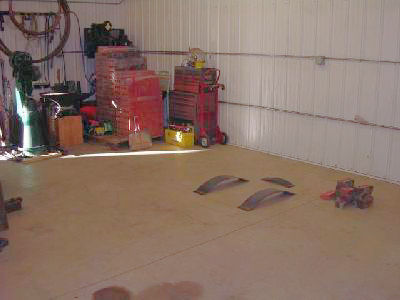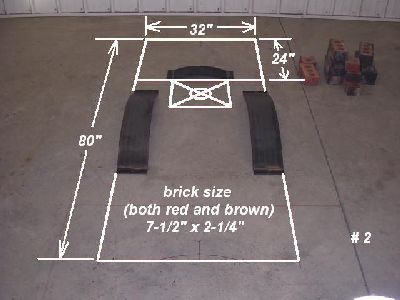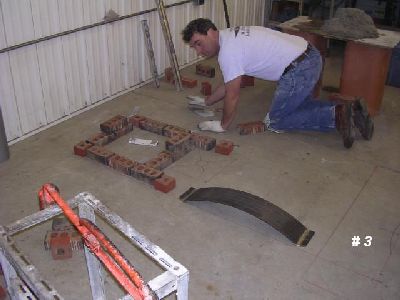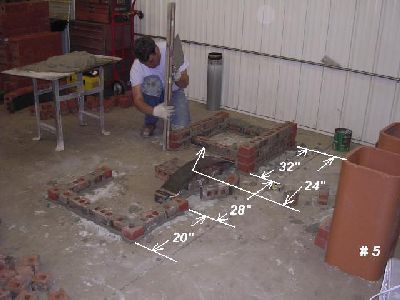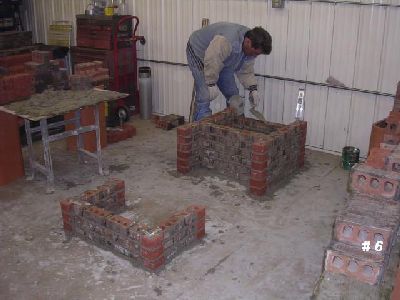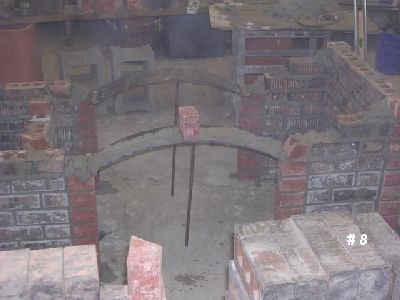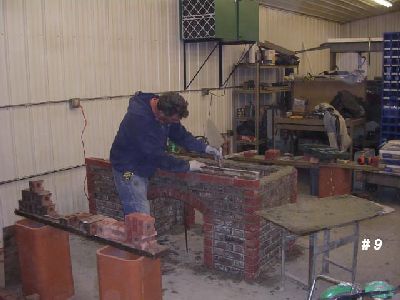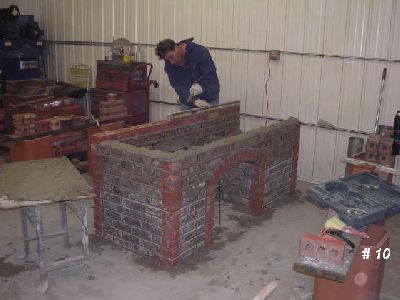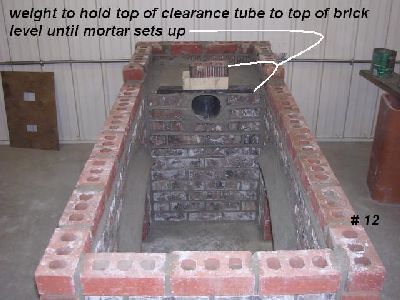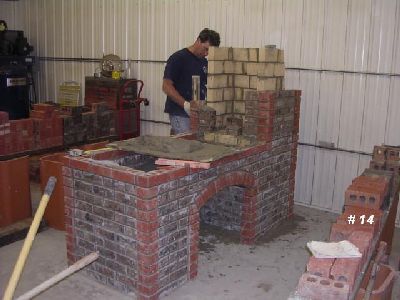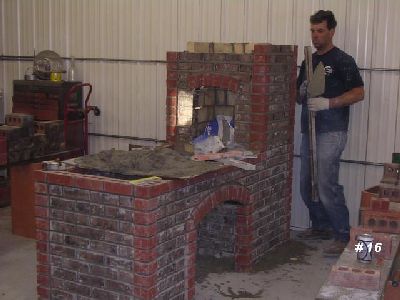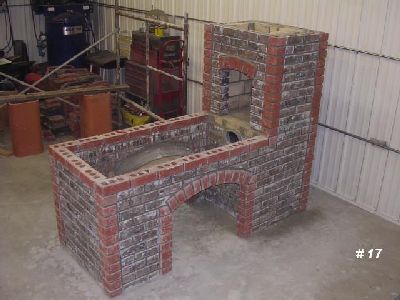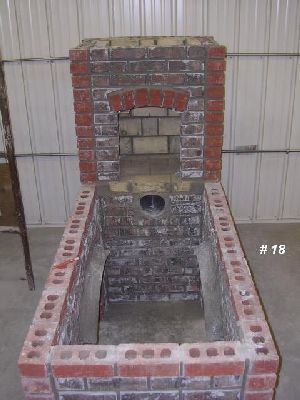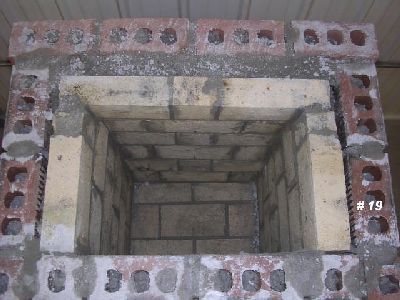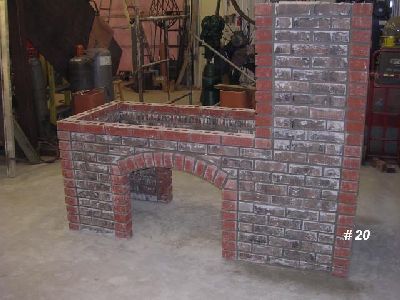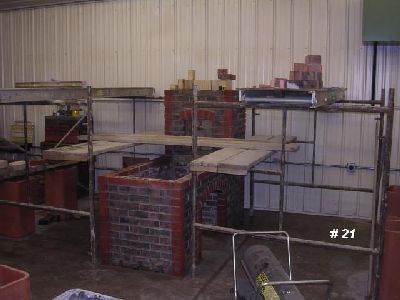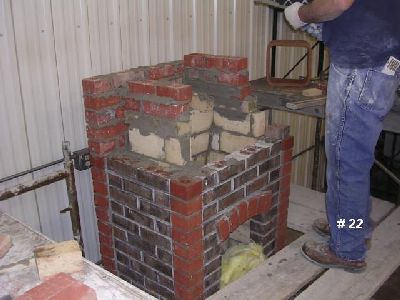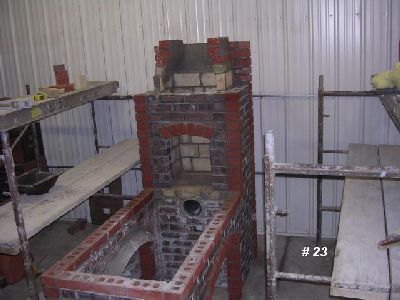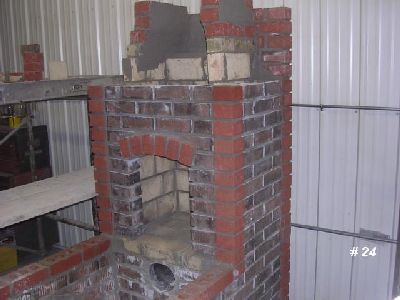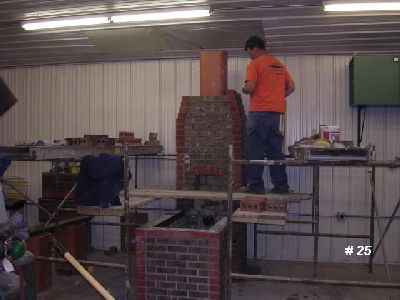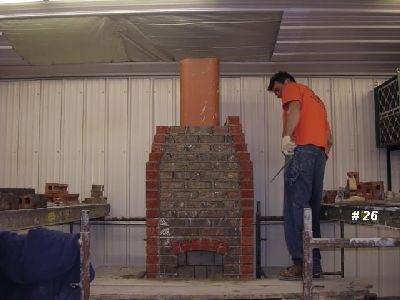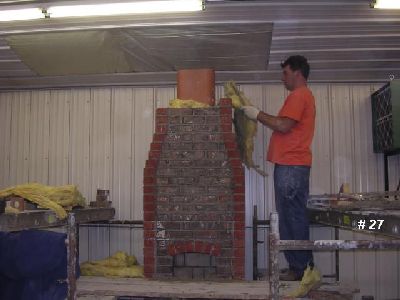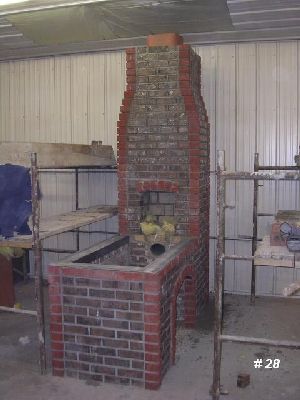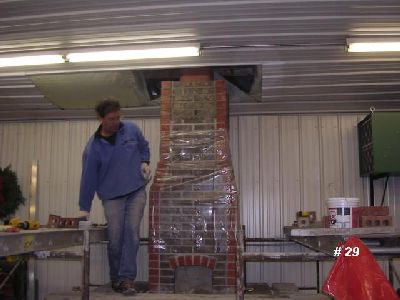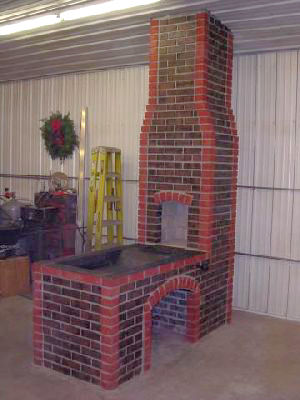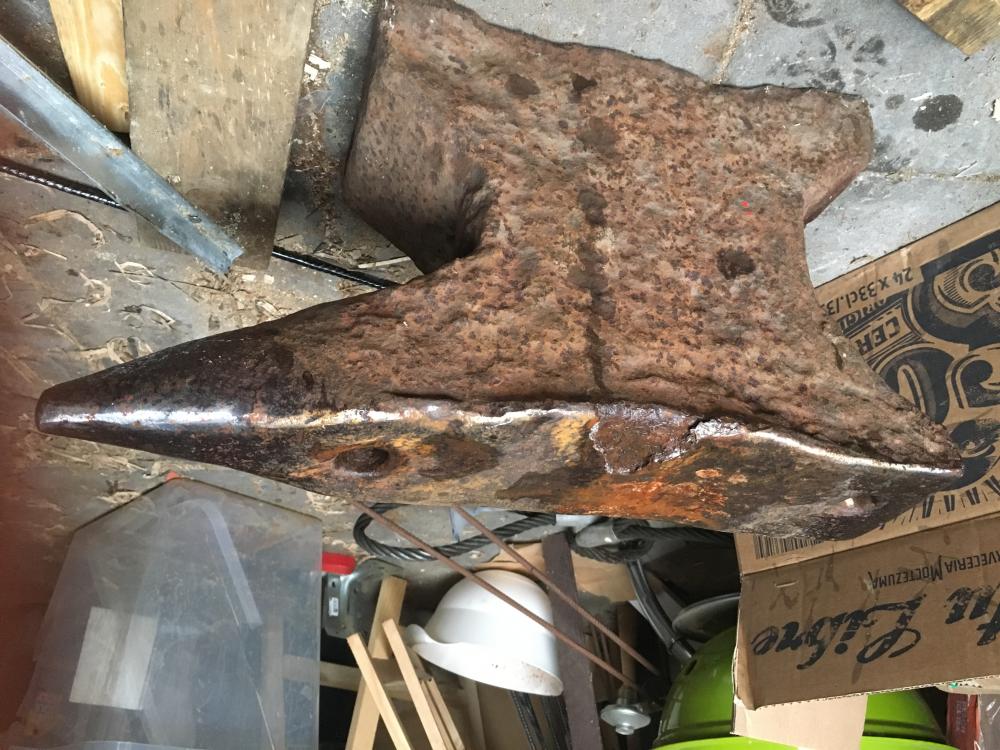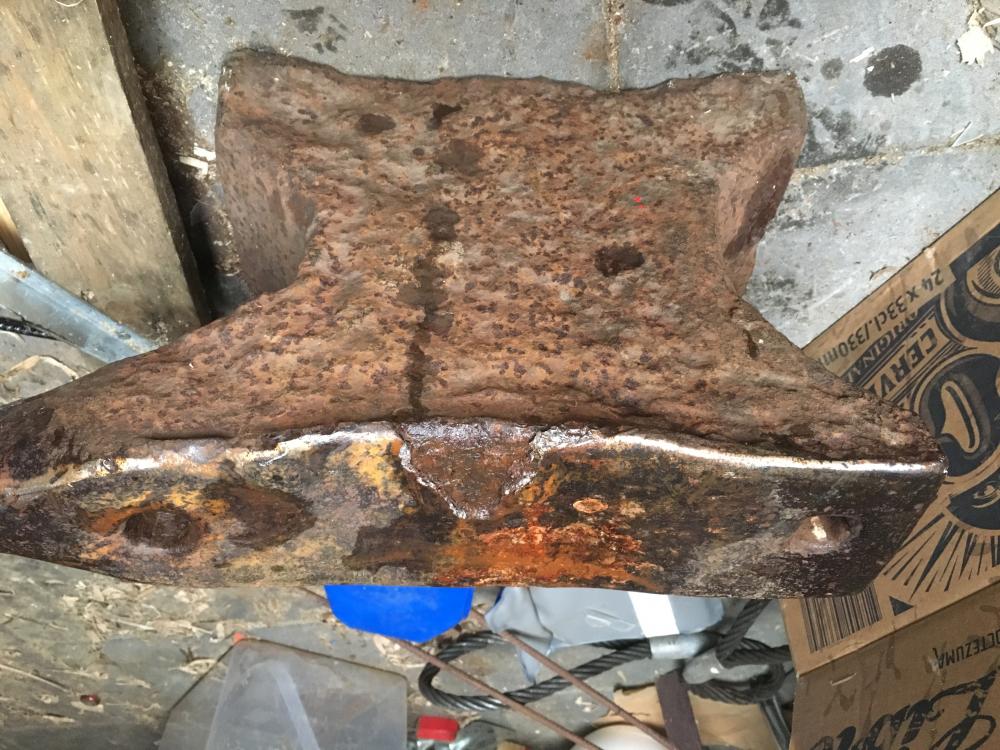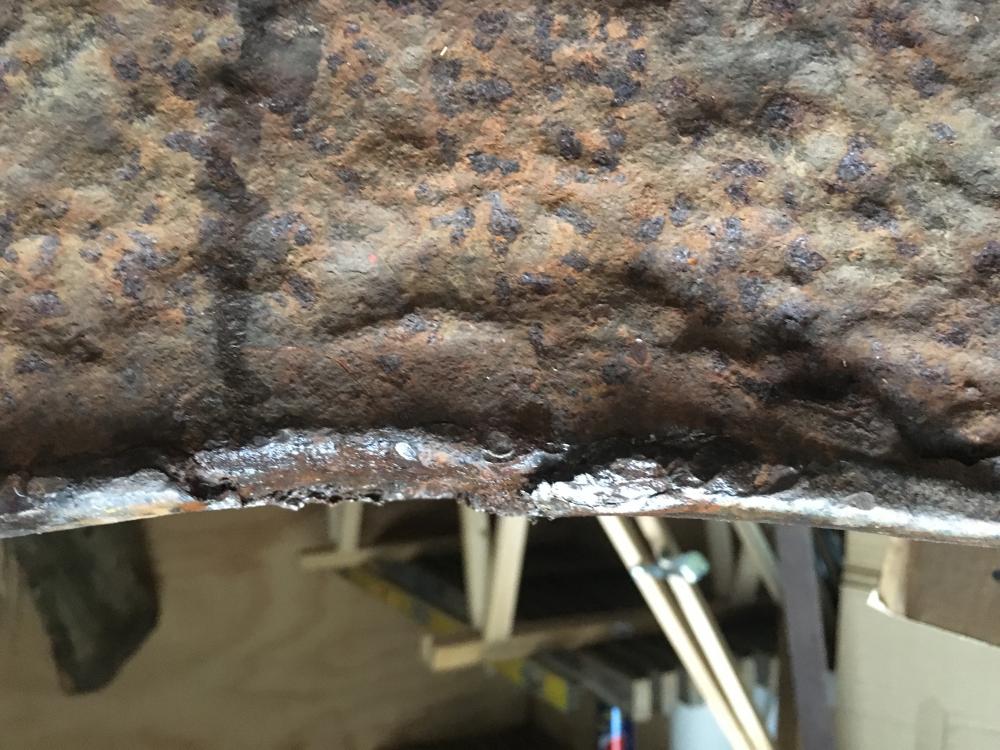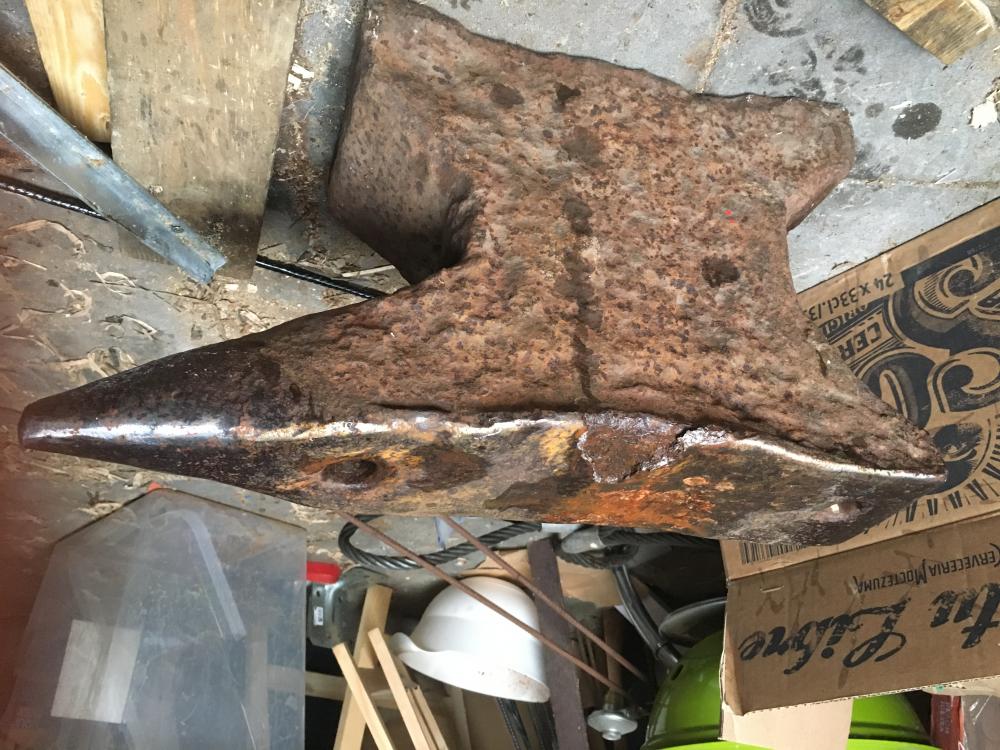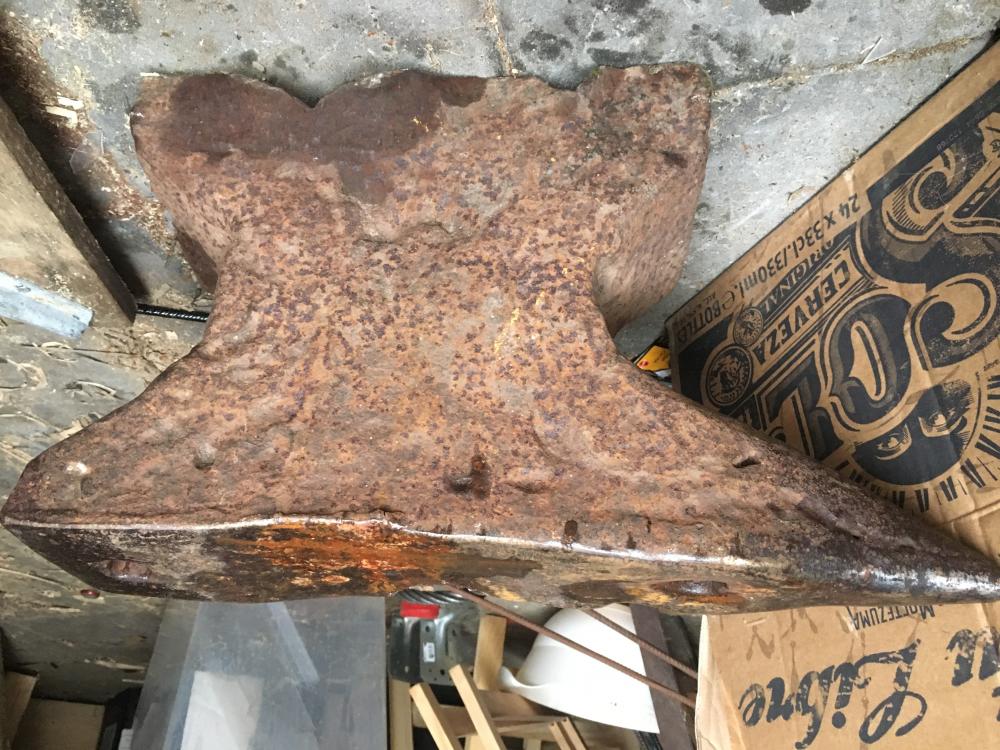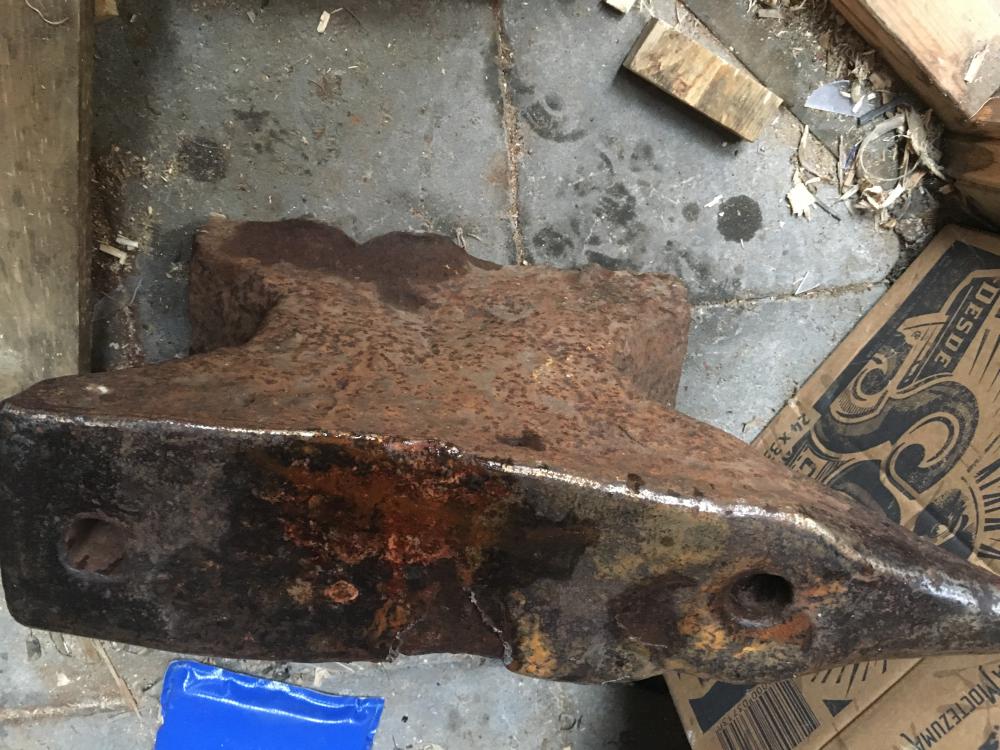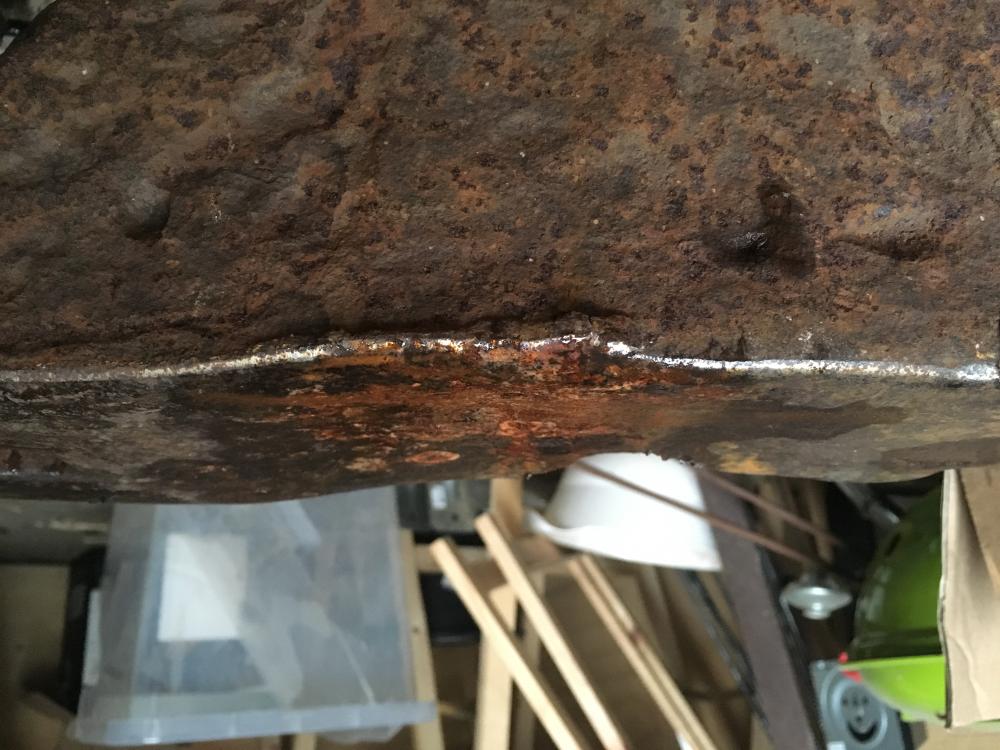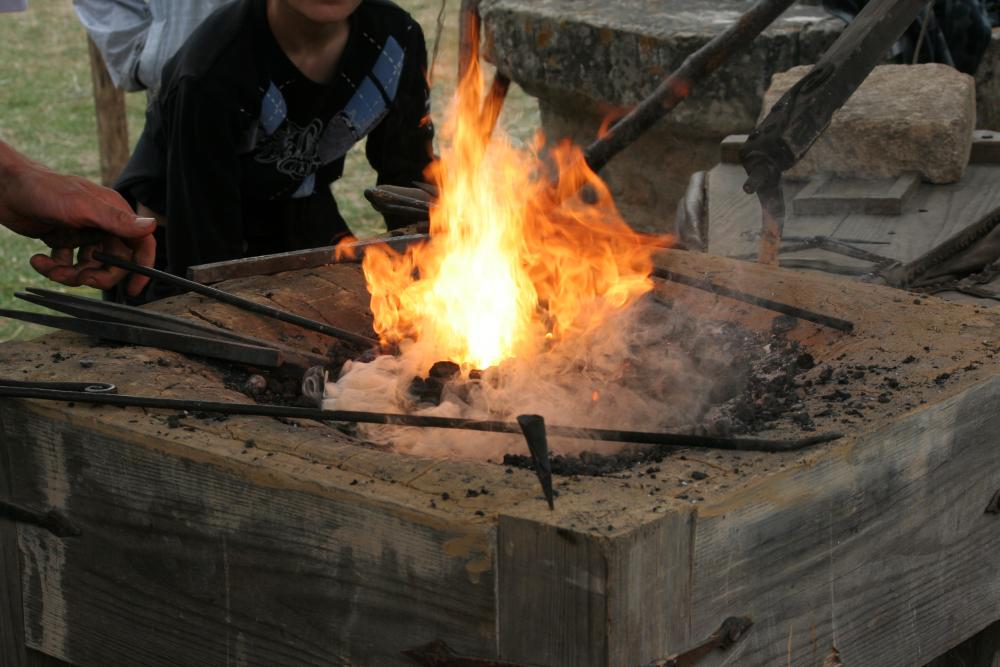
MadsRC
Members-
Posts
25 -
Joined
-
Last visited
Content Type
Profiles
Forums
Articles
Gallery
Downloads
Events
Everything posted by MadsRC
-
I'm looking to forge myself a few wedges for splitting wood, but I find it rather hard finding any material on what type of steel was/is used to forge them? I would think that some kind of soft steel would be used? Maybe even mild steel - As the steel would need to be harder than the wooden log, but softer than the tool striking it (and then the fact that I know wedges are consumables). Having a hardened wedge would, as with having a hardened poll, increase the chance of the metal fracturing and throwing chips in all directions (Please correct me if I'm wrong?) So I should either use mild steel (and reforge them when the get too deform) or maybe use a hardened steel forgewelded to a softer striking surface?
-
Ah Jeremy, would you happen to be the author of the original thread where the pictures originates from? If so, do you happen to know what happened to the thread?
- 13 replies
-
- charcoal forge
- brick forge
-
(and 1 more)
Tagged with:
-
My first real attempt at making something creative at the forge. Forged from a piece of coil spring (Ø15mm) in my charcoal forge. There's a few doodles on the paper for some scales and for some retouching. The monkey tail is a tad too large, thinking of either forging or filing it smaller (like on the drawing) - Also contemplating wether or not I should redo the shoulder so that the head/back is inline with the shank. Could file it, though the twist could cause troubles... Might have to reheat it in the forge (or maybe a torch...)
-
I'm in the process of designing (and eventually building...) a brick forge. During my research I came upon a non-existing thread (Google indexed and links to it here, but it doesn't seem to exist) that detailed a brick forge build. I managed to source the pictures elsewhere and I've attached them below. Hopefully you can use them. IForgeIron Blueprints Copyright 2002 - 2011 IFORGEIRON, All rights reserved BP0553 Building a Brick Forge - Part 1 by Jeremy Knippel 2006
- 13 replies
-
- charcoal forge
- brick forge
-
(and 1 more)
Tagged with:
-
Actually found this while researching. Seems like soapstone crayons will still be visible up to 2000C
-
I was wondering how people mark steel when they are working it? Using a pencil or marker doesn't work as it's burned away. Scratching the metal doesn't seem to work, as I can't see the scratches on the hot steel. The only thing I've found that works is punching a small denty, however, this isn't pretty, and won't work for longer lines. Measuring doesn't really do any good when you can't mark What do you use, and what did the people of old use?
-
I'll admit that I haven't been around a stick welder for nearly a century. So I'll need to go fetch one... What sort of amps will be needed? Would 150 be enough?
-
This thing is old, indeed. Right now I'm only using it for it's Hardy hole (As you mentioned). I'll see if I can get a few pictures of the sides and the bottom. Could you elaborate what you mean with wrong configuration? Never heard of the Gunter method, but I'm xxxx happy to hear you and Frosty mention it. I'm all for restoring old stuff, so I won't worry about the time it takes. Guess I'll read up on the Gunter method
-
That looks like a decapitated starfish
-
Charcoal burning green
MadsRC replied to MadsRC's topic in Solid Fuels: Coal, Coke, Charcoal, Wood, etc
I do plan to give them a call tomorrow. Surely, colored fire is caused by chemicals. If there's a chance their harmful, they should be recalled. Already put the bag aside for later. You're right, hopefully it's not CCA. I did some research and found quite a few chemicals that can cause green flames: thallium compounds antimony compounds barium compounds manganese(II) compounds molybdenum compounds ammonium compounds phosphates moistened with sulfuric acid borax copper sulfate boric acid Ref: http://chemistry.about.com/od/firecombustionchemistry/fl/What-Chemical-Turns-Fire-Green.htm -
So, I found an used anvil, took a chance with it. I'm not sure what brand it is. It's sourced in southern scandinavia. I think it forged, as I can't find any molding seams and it has several strategically placed holes in the base and sides for tongs. Weight is about 75kg. The pritchel hole at the horn seems like it's blocked. Might just be gunk, there a slightly smaller hole below the horn. I think that someone once tried to fix the face by welding a plate to it (or just weld the face). The did a poor job, as it's starting to look like a teenagers face... It's uneven and full of spots. On one of the pictures, you'll see a large portion of it broken of. Tried to sand it down, but I would need to remove about 8mm for it to be leveled. What do you guys think? Worth saving, brand and maker? Note: I wrote this on my phone. When I get near a pc, I'll clean up the post.
-
Charcoal burning green
MadsRC replied to MadsRC's topic in Solid Fuels: Coal, Coke, Charcoal, Wood, etc
Never actually considered that. If CCA smuk info the batch, that would be bad :S So much for "restaurant quality" charcoal -
So I fired up my forge with a fresh batch of charcoal the other day. After some time, I noticed that some of the flames had a slight hint of green. It was fairly obvious, as it was after dark, so I'm fairly sure I that I really did see a green flame. I know that some chemicals can cause green flames (I think I've heard that Borax can cause green flames). Is charcoal supposed to give off that color, or is it an indication of bad quality charcoal?
-
Charcoal vs Coal
MadsRC replied to Ten Hammers's topic in Solid Fuels: Coal, Coke, Charcoal, Wood, etc
Wohoo! I knew I wasn't providing enough data I'm not sure about what type of coke it is - The site says "petrocoke", so I guess it's petroleum coke? I'll contact the manufacturer and ask. Currently I'm using a double-chambered bellows and a 3/4inch sideblast tuyere in a clay forge (Similar to Charles' Box 'o dirt) - However I plan to use a 90w blower, but I don't have any power in my forge yet, and won't for a few months atleast. Currently I'm forging small stuff. Trying to forge tongs, forging nails, hinges etc - or atleast, I'm trying to. Eventually I'd like to forge blades and hatches. -
Charcoal vs Coal
MadsRC replied to Ten Hammers's topic in Solid Fuels: Coal, Coke, Charcoal, Wood, etc
Currently I'm forging with charcoal, but I was wondering if coke would be more efficient (burn hotter?) I'm able to get 25kg of coke for about 8usd just across the border (which is a lot cheaper than charcoal). The coke consists of < 0.7% ash, max 9%water and max 1.05% sulfur. The coke size is 30mm-60mm/90mm Would it work? And how much different is coke to forge with? -
Thanks guys! As usual, I got great advice here. I guess I'll keep storing my charcoal in the charcoal chest. Charles, my entire firepot and top 4inches of the table is clay (rest is a dirt mixture and a brick bottom). My firepot is vitrified, but doesn't seem like it's covered in clinker (though I suppose charcoal doesn't leave behind clinkers?)
-
So, I got my first forge built, using Charles "Just a box of dirt" as inspiration. The "firepot" is 6in deep, 6 inches wide at the top and 2 at the bottom. There's a 3/4inch tuyure about 1inch from the bottom. This should, with coal stacked a few inches above, yield a heart big enough for some beginner stuff. At the moment I'm getting inspiration from YouTube and I'm seeing a lot of guys with their entire hearth/forge covered in coal. Sure seems a lot easier than constantly shoveling in coal from a bag. But say I store my coal on the forge, how come the fire doesn't spread to all the coals and burn 'em up? Lastly, when you're done forging, how do you put out your fire? I usually just let I burn out, but say I have the entire forge covered in coal? Can't just let it burn up then, that would cost way to much coal.
-
Aspiring blacksmith need advice on forge build
MadsRC replied to MadsRC's topic in Solid Fuel Forges
Moved the box to my designated smithy area today. Right next to a big pile of ashes and next to a pile of sand. Unfortunately I found that the soil was too sandy, so I wasn't able to dig up some proper clay. I ended up smashing up some red bricks and using that as the bottom layer. On top of that I put a thick mix of ash/sand and I dug a fire pit. I'm gonna bring home some coal tomorrow and do a burn-in. If it's successful, I'll only need to put in a side blast tuyure! -
Aspiring blacksmith need advice on forge build
MadsRC replied to MadsRC's topic in Solid Fuel Forges
Thanks mate, really useful info. How about the clay, will any kind of clay work, should I get solid or granulate? I think the above is my last question, and I'll have enough info to hopefully start this weekend! -
Aspiring blacksmith need advice on forge build
MadsRC replied to MadsRC's topic in Solid Fuel Forges
Would you be able to share a picture of the tuyure? I'm having a hard time figuring out what the T part is for. The valve, I guess, is for regulating the airflow? How about the end of the pipe, put a grate (?) or something else on to prevent clinker from entering the pipe? -
Aspiring blacksmith need advice on forge build
MadsRC replied to MadsRC's topic in Solid Fuel Forges
The part about the 2" lining is awesome! Exactly the info I need. I was under the impression that the mixture would harden, but if I understand you correctly, it'll be more akin to play dough, allowing me to rework it? If that's the case, then it's even more awesome as it'll allow me to place more tuyere pipes if needed for larger projects. Doing it as my 800th/900th AD ancestors would be my goal. -
Aspiring blacksmith need advice on forge build
MadsRC replied to MadsRC's topic in Solid Fuel Forges
Great advice Charles. Guess I'll close the hole in the bottom, and insert the tuyere from the side of the box. Just need to work out the depth of the firepit, so that I know where to place the notches and how deep. Any idea about the dimensions of the firepit? I'm looking for something in between the size your example and the example that inspired me. I've got a large fireplace with lot's of wood ash, so I got that covered. Could also dig up some clay, but I found a place selling Red Clay with 20% chamotte for 20USD for 10KG... Might just buy a bag of that. Any idea about the ratio of clay, vs ash, vs sand? -
Aspiring blacksmith need advice on forge build
MadsRC replied to MadsRC's topic in Solid Fuel Forges
Looking at Charles R. Stevens post, and re-reading your reply, I'll research using a mixture of clay, sand and ashes and see what happens. -
Aspiring blacksmith need advice on forge build
MadsRC replied to MadsRC's topic in Solid Fuel Forges
I'm located in Scandinavia, more precisely Denmark. I planned on using a mix of Portland cement, sand and fireclay (Which I've been told is also called Chamotte clay, which I know I can source over here). But I've come in doubt after a member told me that portland cement will, I think it was unbind?, it's water when it reaches above 500 degrees Fahrenheit. Most of the firebricks I can find over here is rated to 1200C, which I think is a tad to low. I can get refractory mortar that can withstand 1600C, but it says that you should use it as mortar and not for molding (Said something about a max thickness of about 1CM) -
I'm recently gotten the courage to start blacksmithing. Ideally I'd like to start making small stuff like nails and hangers, eventually upping my game to tools, knives and axes. While I'm new to blacksmithing, I'm not totally new to metalworking, as I've worked lathes and routers ("manual" and CNC controlled ones) many years ago. I've decided on a wooden framed forge. I've attached a picture of the frame I've build. It's about 5cm (Sorry for not using Imperial, I'm Scandinavian) higher than my ideal anvil height. I plan on casting a refractory in the large open area. For reference, I've attached a picture of the forge that inspired me Now, the area that I'm gonna cast the refractory in is 80x80x20cm with a center opening for a tuyere. I wasn't sure on the tuyere size, so I made sure the hole is large. The thing that troubles me is that I'm not sure what recipe to use for the refractory, as I'd like to avoid setting the wood on fire. Could somebody advice me on the useable recipe? The other thing I'm not sure about yet is the size of the "firepit". What would be an optimal size for a forge of this size? Regarding the blower, I haven't decided on hand-crank or bellow yet. I'm gonna read a bit more up on the subject and decide. The only thing I know is that it can't be electrically powered, as I'm building the smithy outside, quite some distance away from an electrical outlet. EDIT: Corrected "correct" to "useable"
